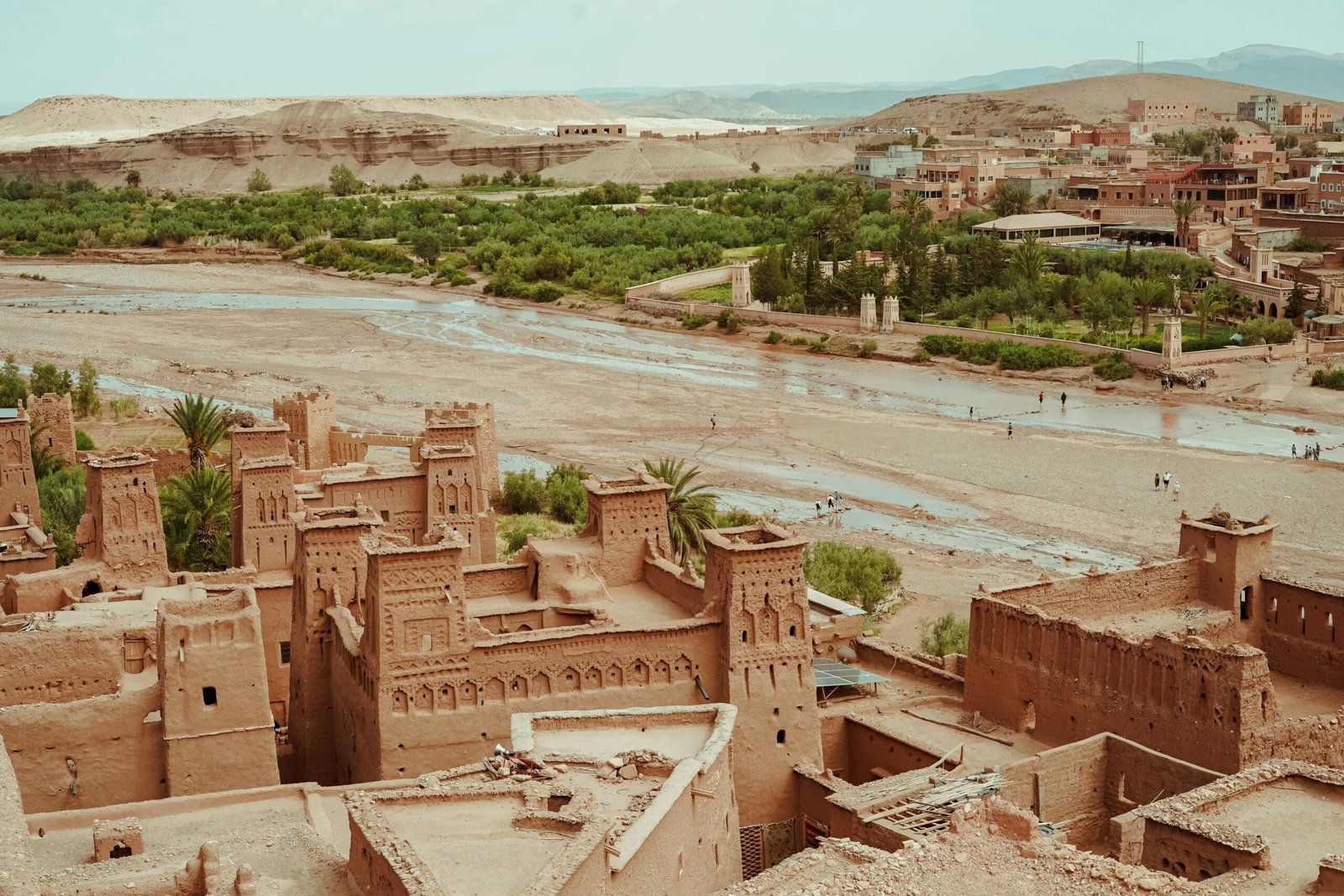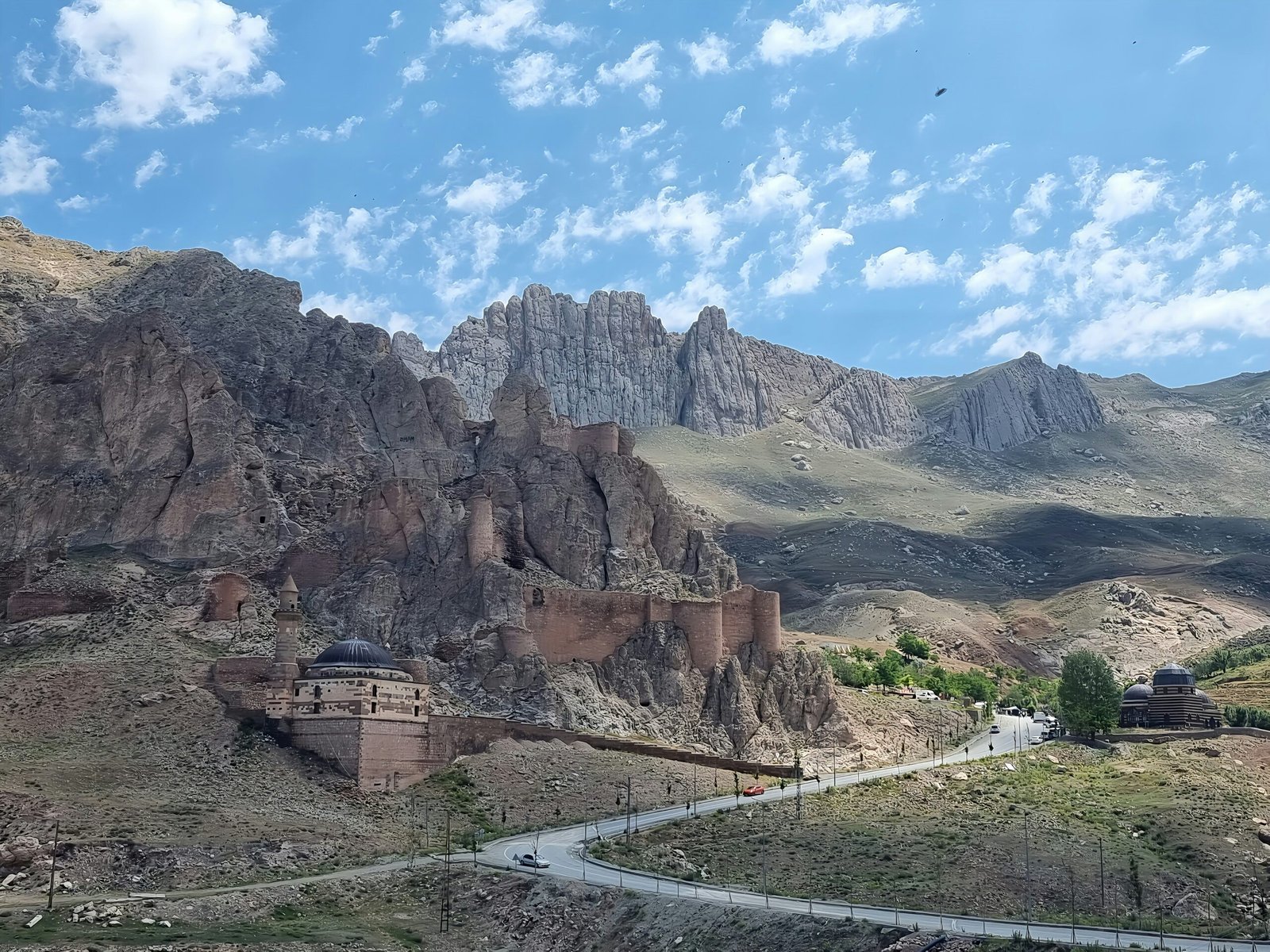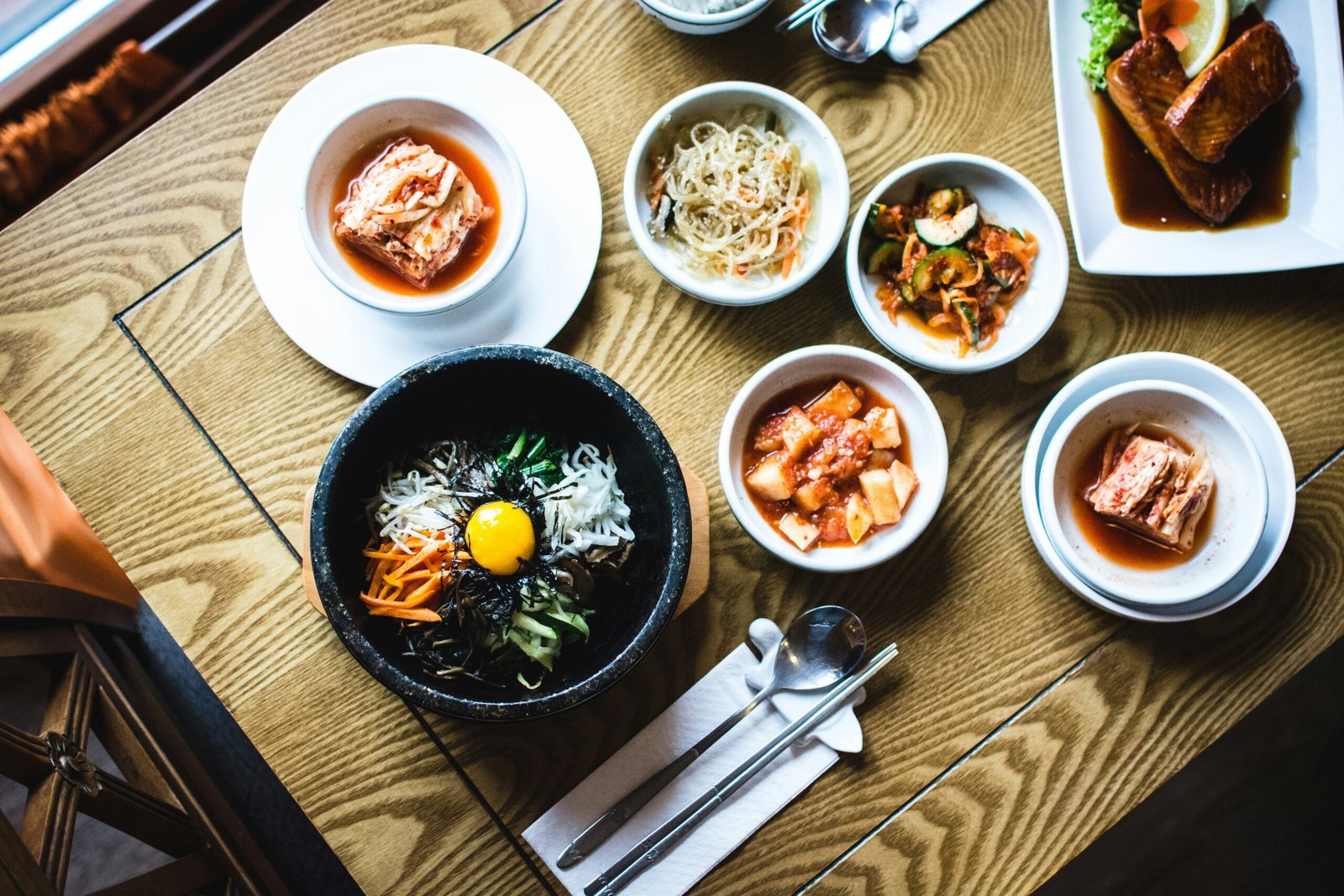Introduction to Japan’s Rural Heritage
Japan’s countryside is a treasure trove of historical villages that serve as living museums, showcasing the rich cultural heritage of the nation. These villages, often nestled in picturesque landscapes, reflect the traditional way of life that has been preserved over generations. Each village tells a story, not only through its architecture but also through the customs and practices that define its community.
The architectural styles found in these rural settings are diverse, with each region boasting unique characteristics that contribute to the overall tapestry of Japanese design. From the thatched roofs of Shirakawa-go, which are expertly constructed to withstand heavy snowfall, to the intricate wooden structures of historic castles and temples, the craftsmanship displayed is a testament to the skills of artisans from centuries past. The use of natural materials, such as wood and straw, not only adds to the aesthetic but also connects these buildings to the environment, highlighting a harmonious relationship with nature.
In addition to their architectural beauty, historical villages in Japan are significant for their role in preserving the country’s traditions. Festivals, ceremonies, and daily life routines often revolve around practices that have been maintained over time, providing insight into Japan’s agricultural past and communal values. The locals in these villages proudly participate in cultural endeavors, keeping alive customs such as rice planting and traditional arts like pottery and weaving.
As travelers seek out unique experiences in Japan, exploring these historical villages offers an opportunity to engage with the country’s rural heritage. Whether it’s walking through quaint streets lined with traditional wooden houses or experiencing seasonal festivals, visitors can find themselves immersed in a culture that has both historical roots and contemporary relevance. This journey not only highlights Japan’s past but also emphasizes the importance of preserving these irreplaceable cultural landmarks for future generations.
The Importance of Preservation
Preserving historical villages in Japan’s countryside is vital for maintaining the nation’s cultural identity and heritage. These villages serve as living museums, offering insight into traditional lifestyles, architectural styles, and regional customs that have shaped Japan’s cultural landscape over centuries. As modernization sweeps through urban and rural landscapes alike, many of these villages face the impending threat of being forgotten or completely transformed. This transformation can lead to the loss of local knowledge, crafts, and practices that are integral to Japan’s rich cultural tapestry.
The impact of modernization on rural areas often results in the abandonment of traditional ways of life, as younger generations migrate to urban centers in search of better economic opportunities. As a consequence, the unique characteristics of these historical villages may diminish, leading to homogenization of culture, where distinct regional identities are overshadowed by modern conveniences and standardized living conditions. This shift underscores the importance of local communities in the conservation of these invaluable sites. Community involvement is crucial not only for preserving the physical structures but also for passing down knowledge and traditions to future generations.
Local residents often take the initiative to safeguard their heritage, organizing cultural events, workshops, and educational programs that foster appreciation for their history among younger generations. In addition to grassroots efforts, various government initiatives exist to support these preservation activities. Policies are being developed to encourage sustainable tourism, provide funding for the maintenance of historical buildings, and promote educational outreach that highlights the significance of these treasures. Ultimately, the preservation of rural historical villages is a collaborative effort that requires the engagement of local communities, government bodies, and the general public. This multifaceted approach ensures that Japan’s cultural identity remains vibrant and intact for generations to come.
Shirakawa-go: The Iconic Gassho-Zukuri Village
Shirakawa-go, located in the mountainous region of Gifu Prefecture, is renowned as a quintessential example of traditional Japanese village life, designated as a UNESCO World Heritage Site in 1995. The architectural marvel of Shirakawa-go primarily lies in its Gassho-zukuri style, where the farmhouses possess steep thatched roofs resembling hands in prayer—a design adapted to withstand heavy snowfall and to optimize space for rice cultivation and sericulture.
The Gassho-zukuri houses are constructed with wooden beams and natural materials, embodying an intricate craftsmanship that has been passed down through generations. Visitors can explore these traditional homes to witness the charming interiors, often featuring tatami mat flooring, large hearths, and sliding doors. The aesthetic beauty is further enhanced by the juxtaposition of these structures against the picturesque backdrop of the Japanese Alps, providing a truly immersive experience.
Shirakawa-go transforms with the seasons: in spring, cherry blossoms and vibrant greenery breathe life into the landscape, while summer showcases lush rice paddies. Autumn ushers in a stunning array of fall colors, and winter blankets the village in snow, creating a serene and otherworldly atmosphere. Each season offers unique photographic opportunities and allows visitors to appreciate the village’s natural beauty.
Cultural practices in the village are integral to its identity. The residents engage in traditional crafts and farming techniques and participate in seasonal festivals that highlight their connection to nature and community. For travelers, visiting Shirakawa-go is enhanced by timing your trip to coincide with its famous winter illumination festival, where Gassho-zukuri houses are adorned with lights, creating a fairy-tale setting.
For those planning a visit, traveling by bus from Takayama or Kanazawa is recommended, as these connections provide access to and from the village. Accommodations are mostly traditional guesthouses, offering an authentic stay. To fully enjoy Shirakawa-go’s splendor, consider exploring the village on foot, allowing for an intimate encounter with its rich heritage and breathtaking landscapes.
Gokayama: A Hidden Gem in the Mountains
Nestled in the remote mountains of Toyama Prefecture, Gokayama is a remarkable historical village that offers visitors a unique glimpse into Japan’s rural past. This picturesque locale is often overshadowed by its more famous counterpart, Shirakawa-go, yet Gokayama boasts its own breathtaking landscapes and rich cultural heritage. Surrounded by steep mountain ranges and lush green valleys, the village provides a stunning natural backdrop that enhances its charm.
The inhabitants of Gokayama have preserved traditional lifestyles that reflect a deep connection to the land and their history. Many of the houses in the village showcase the distinct gassho-zukuri architectural style, characterized by their steep thatched roofs designed to withstand heavy snowfall. Strolling through the village, one can observe the harmonious relationship between these structures and the surrounding environment, illustrating how the locals have adapted to their mountainous terrain over generations.
One of the standout features of Gokayama is its weaving industry, which has been an integral part of the local economy for centuries. The villagers are skilled artisans who create beautiful textiles using traditional methods. The craft of tsumugi weaving, for instance, is notable for its intricate designs and high quality, making Gokayama textiles highly sought after. Visitors to the village have the opportunity to witness these craftspeople at work, providing insight into the time-honored techniques that have been handed down through families.
Moreover, Gokayama is home to various cultural festivals and events that celebrate its heritage. These occasions allow visitors to engage with the local community and experience traditional music, dance, and cuisine, further reinforcing the village’s cultural significance. Gokayama, with its stunning landscapes and commitment to preserving its history, is truly a hidden gem that offers a distinct perspective on Japan’s countryside and its enduring cultural fabric.
Takayama: A Blend of Tradition and Modernity
Located in the mountainous Hida region of Gifu Prefecture, Takayama is a charming city that seamlessly blends traditional Japanese culture with modern-day conveniences. Known for its rich history, Takayama offers visitors a glimpse into Japan’s past, while also providing the comforts of contemporary living. The area’s well-preserved Edo-period architecture is one of its main attractions, allowing tourists to walk through streets that seem to have frozen in time.
One of the must-visit places in Takayama is the Hida Folk Village, an open-air museum that showcases traditional rural life in the Hida region. Here, visitors can wander through a collection of thatched-roof farmhouses relocated from various parts of the area. These structures are not only architectural marvels but also serve as a testament to the agricultural practices and lifestyles of the past. Alongside the picturesque setting, the village often hosts workshops and cultural demonstrations, providing a more interactive experience for those eager to learn about historical crafts, such as pottery and weaving.
In addition to the folk village, Takayama is renowned for its vibrant morning markets, which take place daily along the Miyagawa River. These markets are an excellent opportunity to experience local culture, showcasing a variety of fresh produce, handmade crafts, and delicious street food. The ambiance during the early hours is lively, as vendors display their goods while locals and tourists alike enjoy the spirited atmosphere. Overall, these markets reflect the harmonious relationship between the region’s agricultural heritage and its modern lifestyle.
As one strolls through the narrow streets of Takayama, the blend of traditional and modern elements is evident in various aspects, from local shops to cafés. The city stands as a remarkable representation of how history can coexist with contemporary life, making it a destination worth experiencing in Japan’s countryside.
Ouchi-juku: The Edo Period’s Butterfly
Ouchi-juku is a quintessential post town that transports visitors back to the Edo period, showcasing a unique atmosphere that captivates history enthusiasts and casual travelers alike. Nestled in the mountainous region of Fukushima Prefecture, this village features remarkably preserved thatched-roof houses that exemplify traditional Japanese architecture. These rustic homes create a striking contrast with the surrounding landscapes, providing a picturesque setting that seems almost frozen in time.
As you wander through Ouchi-juku’s narrow lanes, you are enveloped in the historical charm of the Edo period. This village served as a resting point for travelers and merchants navigating the ancient highways of Japan, and it continues to offer that welcoming spirit. The local cuisine adds another layer of authenticity to the experience. Visitors can savor hearty dishes like negi (leeks) soba, a signature dish that highlights the region’s agricultural bounty. The warmth of a rich broth complements the distinct flavor of the local soba, making it a must-try for anyone visiting the village.
During the winter months, Ouchi-juku transforms into a snowy wonderland, renowned for its enchanting winter festivals. The village becomes illuminated with festive lights, drawing both locals and tourists to experience traditional celebrations that include firework displays and market stalls selling artisanal crafts. This seasonal transformation not only enhances its historical allure but also encourages visitors to enjoy outdoor activities such as walking trails that weave through the scenic countryside.
These trails offer an immersive way to engage with Japan’s past while appreciating the natural beauty of the region. In Ouchi-juku, heritage, culture, and breathtaking landscapes come together, creating an unforgettable stop for those exploring Japan’s historical villages.
Narai-juku: The Most Beautiful Post Town
Narai-juku, situated in the Nagano Prefecture of Japan, stands out as one of the most exquisitely preserved post towns along the historic Nakasendo Trail. This village played a vital role during the Edo period as a crucial resting point for travelers, merchants, and feudal lords journeying between Kyoto and Edo (now Tokyo). The town’s historical significance is palpable, providing a tangible connection to Japan’s rich past.
The unique charm of Narai-juku is reflected in its traditional wooden buildings, many of which date back to the 18th century. The architecture of Narai-juku exhibits the essential characteristics of post town design, featuring narrow streets flanked by beautifully crafted timber structures. Visitors are often captivated by the intricate details found in the eaves, doors, and windows, as well as the overall harmonious layout of the town. Strolling through the streets offers an immersive experience, as one can appreciate the artistry and craftsmanship that has been preserved over centuries.
In addition to its architectural beauty, Narai-juku is home to a variety of local artisans. Visitors can witness traditional crafts, such as woodblock printing and the production of washi paper, which exemplify the skills passed down through generations. These local crafts provide not only insights into the cultural heritage of the area but also opportunities to purchase unique souvenirs that embody the essence of Narai-juku.
The stunning landscape surrounding this picturesque post town adds to its allure, with mountains and lush greenery providing a breathtaking backdrop. Outdoor enthusiasts can explore several hiking trails, offering magnificent views as well as a chance to experience the tranquility of the countryside. As a destination that captures the spirit of Japan’s historical journey, Narai-juku is undoubtedly a must-see village for any traveler with an interest in cultural heritage.
Iya Valley: A Rustic Retreat
Nestled in the heart of Shikoku, Iya Valley is a captivating rural region that offers visitors a serene escape into Japan’s natural and historical heritage. Known for its breathtaking gorge and iconic vine bridges, this remote valley is steeped in a rich historical backdrop that dates back to the era of the Heike clan, who sought refuge here during the Genpei War in the late 12th century. The story of Iya Valley is one woven into the fabric of Japan’s diverse cultural tapestry, embodying both resilience and a connection to nature.
Historically, the valley served as a refuge for those fleeing from central Japan’s political upheaval. Today, this place plays a crucial role in preserving Japan’s rural culture. The local communities continue to maintain traditions that have endured for centuries, including the art of vine bridge weaving, which reflects the resourcefulness of its inhabitants. These unique bridges, such as the famous Kazurabashi, not only serve as functional pathways but also attract tourists, drawing attention to the valley’s ecological richness and historical significance.
In recent years, eco-tourism has gained prominence in Iya Valley, promoting sustainable travel practices that respect the area’s natural environment and cultural heritage. Visitors can partake in numerous activities that celebrate both history and the stunning landscapes, such as hiking along picturesque trails, exploring pristine rivers, and experiencing authentic local cuisine made from seasonal ingredients. Adventure seekers can also engage in thrilling experiences, including river rafting and zip-lining, providing a modern twist to the historical allure of the region. Iya Valley represents a harmonious blend of past and present, offering insights into Japan’s rich history while fostering an appreciation for its breathtaking natural beauty.
Tucked Away Treasures: Other Notable Villages
While many visitors to Japan flock to well-known destinations, the countryside is dotted with historical villages that offer a glimpse into the nation’s rich cultural heritage. Among these, Hida Takayama stands out with its traditional architecture, beautifully preserved from the Edo period. The village is famous for its vibrant morning markets where local produce and crafts are sold, as well as the Takayama Festival held twice a year, showcasing intricate floats and traditional performances. Walking through the streets of Hida Takayama transports visitors to a different era, with the picturesque Sanmachi Suji district inviting exploration.
Another noteworthy destination is the Kiso Valley, known for its scenic beauty and historical significance as part of the Nakasendo trail, which connected Kyoto and Edo during the Edo period. The valley features several post towns, such as Magome and Tsumago, which have been beautifully preserved to reflect their historical charm. Visitors can hike between these towns, enjoying stunning views of the countryside while experiencing the cuisine and hospitality of local inns. The area’s wooden houses and traditional craft shops evoke a sense of nostalgia, making it a perfect spot for those seeking a peaceful retreat.
Kurokawa Onsen is equally enchanting, renowned for its tranquil hot springs and picturesque surroundings. Nestled in a valley, the village boasts numerous ryokans (traditional inns) that offer onsen baths with stunning views of nature. Visitors can enjoy the serene ambiance while bathing outdoors, making it a truly unique experience. The village is also home to various walking trails that allow guests to immerse themselves in the beautiful landscapes. Together, these villages—Hida Takayama, Kiso Valley, and Kurokawa Onsen—highlight the diverse historical treasures found in Japan’s countryside, each providing unique experiences that reflect the country’s rich cultural tapestry.
Conclusion: The Charm of Japan’s Countryside Awaits
The historical villages of Japan’s countryside offer a unique glimpse into the nation’s rich heritage and cultural fabric. These charming locales serve as repositories of traditions, showcasing architecture, artisanal skills, and daily practices that have been preserved over generations. In visiting these villages, travelers have the opportunity to engage in slow travel — an approach that emphasizes the quality of the experience over the quantity of destinations visited. This method encourages a deeper connection with the land and its people, fostering meaningful interactions with the communities that inhabit these breathtaking regions.
Furthermore, the landscapes surrounding these villages are equally captivating, characterized by a harmony between the natural environment and human craftsmanship. From terraced rice fields to ancient pathways lined with cherry trees, the scenery invites exploration and reflection, reminding travelers of the beauty that lies within simplicity. Engaging in local customs, such as traditional festivals or hands-on workshops with artisans, can enrich one’s understanding of Japan’s cultural nuances and enhance the community’s legacy.
As you prepare to embark on your adventure, consider the value of immersing yourself in these historical villages. Each visit is an invitation to learn, engage, and appreciate the subtleties of Japanese culture. The warmth of the local residents, the serene environment, and the profound sense of history combine to create an experience that is both enriching and unforgettable. Japan’s countryside, with its charming villages, awaits — ready to unveil stories, traditions, and breathtaking landscapes that capture the essence of this beautiful country. Discover the allure of these destinations, and you may find yourself inspired to delve deeper into the myriad wonders Japan has to offer.














